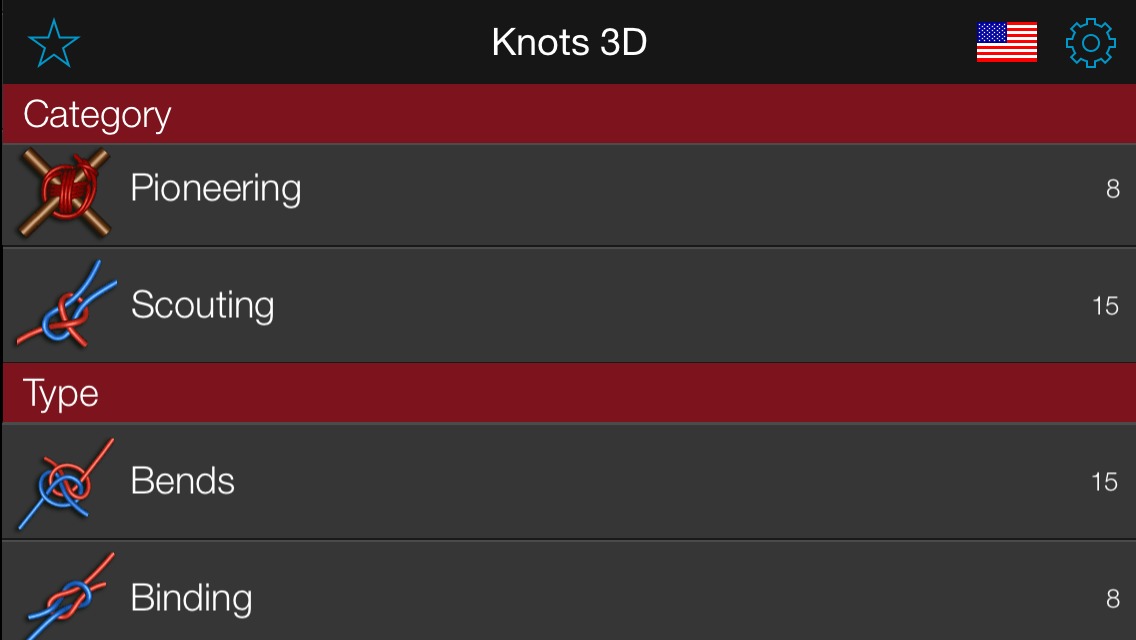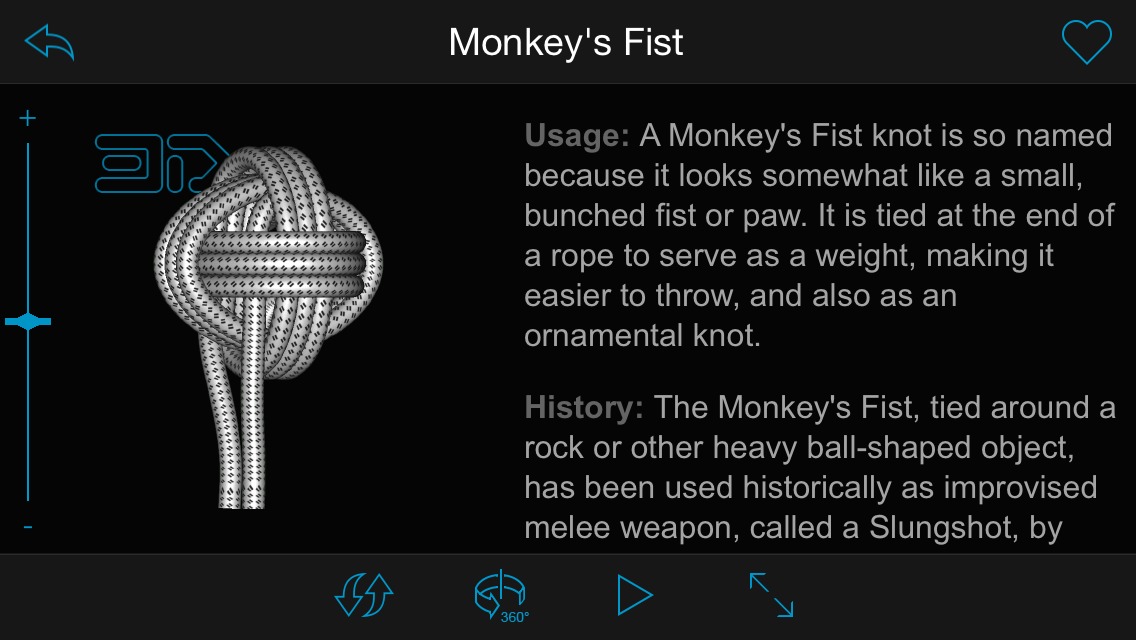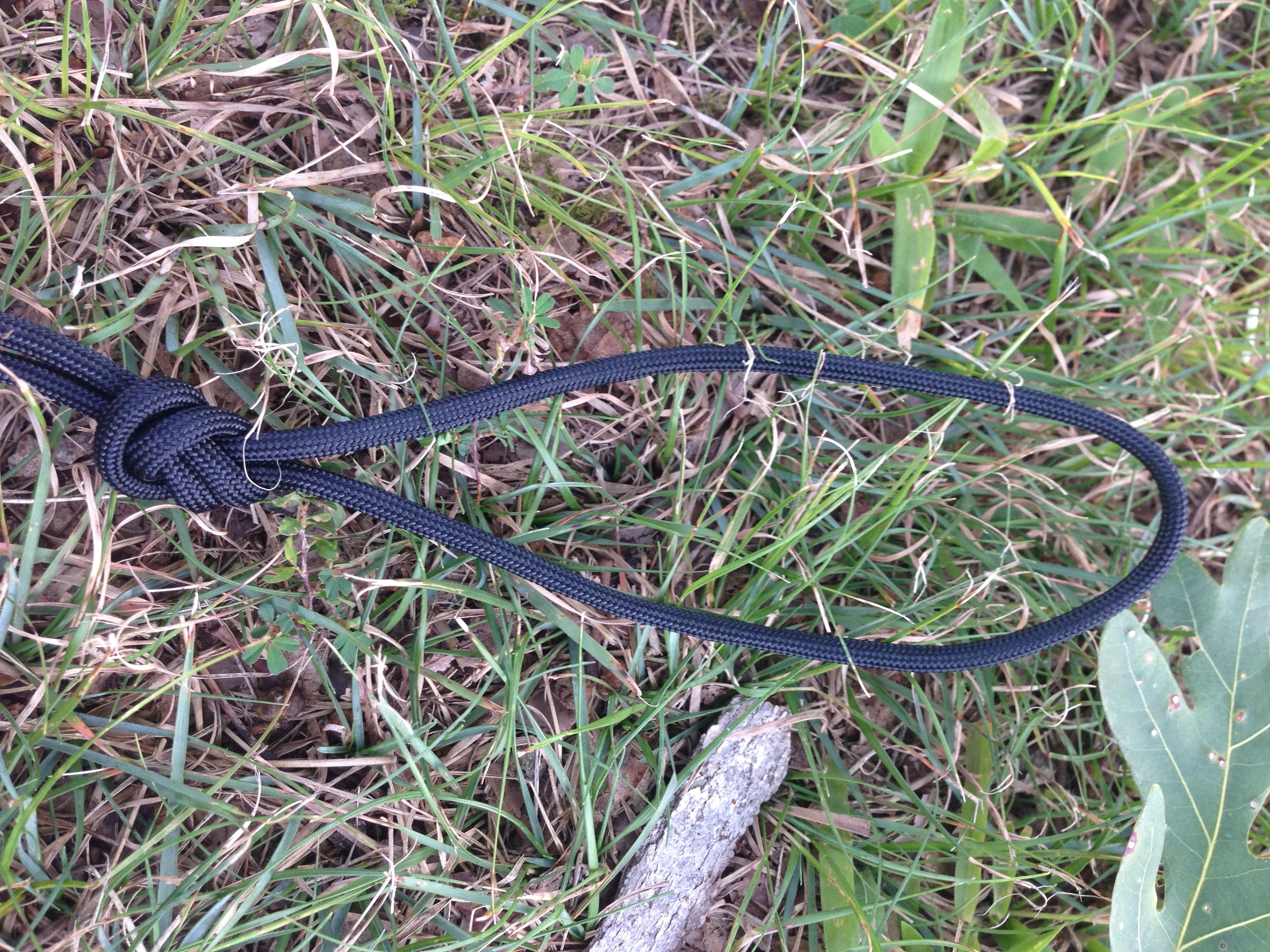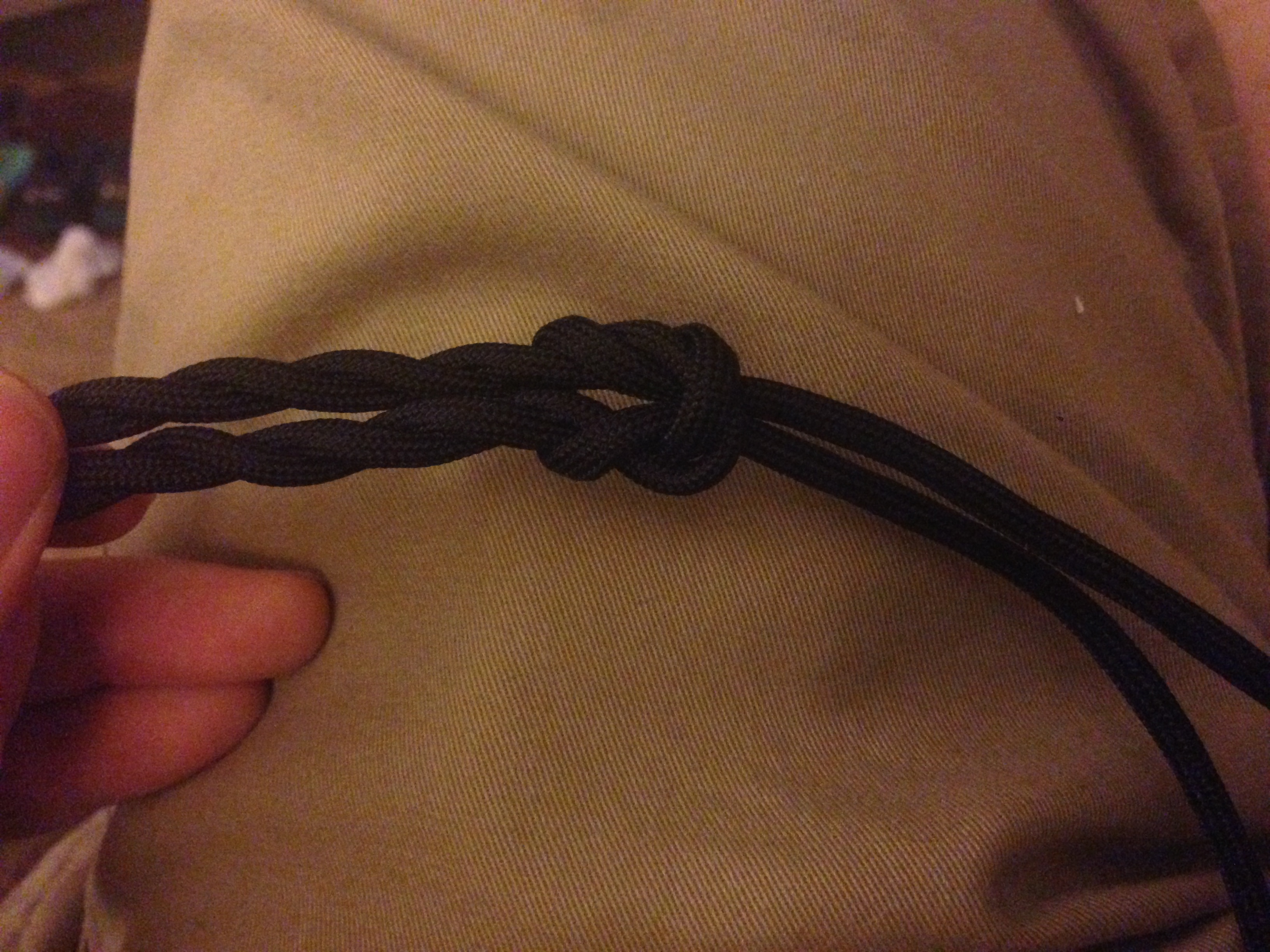FunBITS: Learn Knot Tying the iPhone Way
This part of the globe is currently teetering on the precipice between summer and fall, and it’s prime outdoor season. It’s still warm enough outside for most summer activities, and over the next few weeks the bugs and reptiles will begin their retreat, hunting seasons will start around the country, and tailgating season will be in full swing.
Whether you’re fishing, securing something to the roof of your car, hoisting game, or even hanging Halloween decorations, tying knots is an essential outdoor skill. Unless you spent a good chunk of time in the Scouts or the Navy (or are in a knot-intensive profession), you’re probably limited to granny knots. After all, the adage, “if you can’t tie knots, tie lots” usually gets the job done. But sometimes more finesse is required. Wouldn’t it be nice to know how to string a clothesline that will stay tight, add a loop to an end of rope, or secure a fishing hook so that trout doesn’t swim away, giggling at your inferior line tying skills?
This is a problem I’ve recently encountered as I’ve developed a newfound interest in the outdoors. I’ve always been knot-challenged. I couldn’t tie my shoes until I was eight, and the Boy Scout knot guides I read as a kid confounded me.
There are endless knot resources, but most are flawed. Text descriptions suffer from excessive use of knot jargon (“tie a bend to your bight, but be careful or it could capsize”), pictures show only part of the process, and video demonstrations can be obscured by hands or mediocre camera work. What we need is a database of knots, with variable-speed animated demonstrations, that would let you see the knot from any angle. Fortunately, there’s an app for that: Knots 3D, which is only $0.99 in the App Store and runs on any device using iOS 5.1 or later.
Knots 3D organizes its 94-knot database into usage categories, such as boating, camping, fire & rescue, and fishing, as well by type, such as bends, hitches, lashings, and loops. There is also a complete list of knots, arranged alphabetically, knots recently added to the app, and those you’ve denoted as favorites.
When you tap a knot, you see a 3D animation of the knot being tied, along with an encyclopedic amount of information about the knot, including usage advice, historical information, other names, related knots, and even the structure of the knot, including its weaknesses.
The text can be useful, but the main attraction is the animated 3D rendering of the knot. By default, the animation runs too quickly to see individual steps, but a slider lets you adjust the speed of the animation. You can also slide a finger across the animation to step through each frame. At the bottom of the screen sit four buttons, from left to right, that enable you to flip the animation (so you can see it upside down), rotate the knot, replay the animation, and fill the screen with the knot, hiding the text. In the upper-right is a
heart button, which adds the knot to your favorites.
So which knots should you check out first and potentially save as favorites? Here are a few I’ve found to be particularly handy, yet easy to learn:
- Bowline: Known as the king of the knots, the bowline forms a fixed loop at the end of a line, and is easy to tie and untie. The drawback is that without sufficient tension, it can potentially come loose. It’s commonly used in boating and rescue.
- Figure Eight Loop: A simple method for making a fixed loop at the end of a line, the figure eight loop is stronger than the bowline, but can become difficult to untie after being under load. It’s often used in climbing and spelunking.
-
Single Rope Braid: Handy for making bracelets, or for dads who desperately need help learning how to braid their daughters’ hair.
-
Sheet Bend: Considered to be an essential knot, the sheet bend is intended to join two lines of unequal size (think attaching a fishing line to a rope), but works just as well for similarly sized lines. In a pinch, you could use sheet bends to construct a net.
-
Two Half Hitches: Need to tie a rope around something? Using two half hitches is an easy, secure way to do so.
-
Taut Line Hitch: If two half hitches are attractive, but you need to also be able to adjust the tension of the rope, the taut line hitch is ideal. Once you have it mastered, the more advanced trucker’s hitch does an even better job.
Now you have six useful, easy-to-learn knots, but what should you tie them with? Different applications require different types of rope, but it’s hard to go wrong with 550 paracord, which is the duct tape of cordage and a favorite of outdoorsy types. It’s cheap, it’s light, it’s tough, and it’s versatile. Paracord has been used to repair the Hubble Space Telescope, make bullwhips, weave belts, build shelters, and of course, to suspend parachutes (the picture below is a rope I twisted together from paracord). In a pinch, the core can be stripped out for sewing thread or fishing line. The only thing I dislike about it is that it unravels easily, so you need a sharp
knife to cut it cleanly, and something to melt the ends together, like a match or a lighter.
As someone who has been knot-challenged his whole life, Knots 3D has been an invaluable learning aid, and is a handy app to keep on your iPhone. Learning knots may not be fun in and of itself, but what you can do with them opens endless possibilities. So spend $5 on some paracord, download Knots 3D for $0.99, and start practicing. If Knots 3D can teach me to tie knots, then it can teach anyone.





Neat app! Thanks for pointing it out. As an "old" scoutmaster, I appreciate stuff like this.
Nice review!
I've been using Knot Guide from Winkpass. The illustrations are clear but not 3D or animated.
My must have knots for frequent use:
Simple Simon Under bend. More secure than a sheet bend for slick line, and for lines of quite different sizes.
Ashley's stopper knot.
Eskimo/Boas bowline. Usually more secure than the common bowline especially with slick line.
Jug knot. Great to hang a water bottle from a belt clip. You can link up a string of bottles to drop in cold water.
For practice, I like a round bootlace. Handy size for fiddling with on the bus.
If you get addicted:
Budworth, Ultimate Encyclopedia of Knots and Ropework. Good illustrations, and info about how much some of the knots weaken the line.
Ashley, The Ashley Book of Knots. 1300+ knots and variations. I don't have it because I'm not that adept, but it's worth keeping an eye out for a used copy.
I didn't see Windsor, Half-Windsor, Prince Albert, Four-In-Hand, etc. knots in the list. ;-)
Someone somewhere needs to get out of the woods and into a classroom to learn the difference between "taught" and "taut." Don't know whether the writer of this piece or the app is at fault.